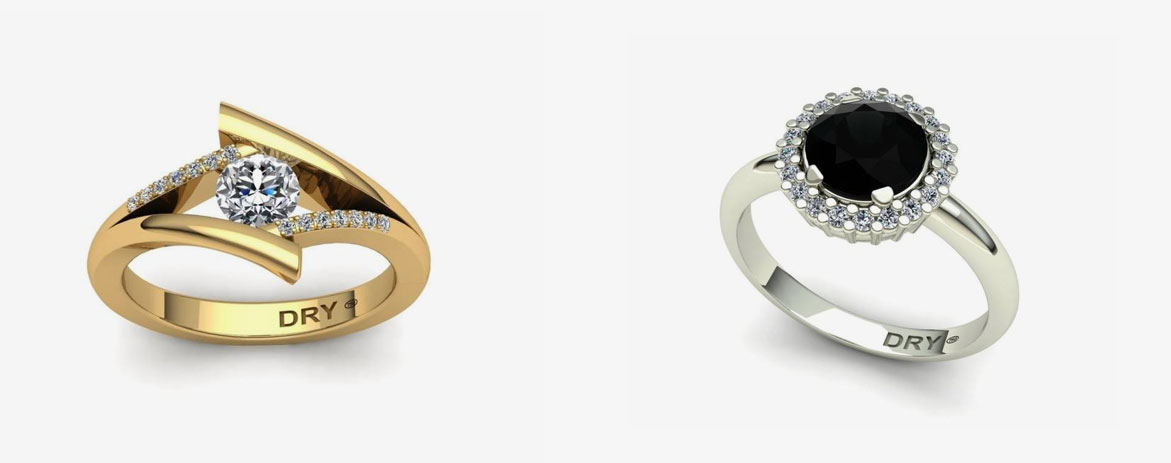Introduction to Diamonds:

Geological Formation of Diamonds
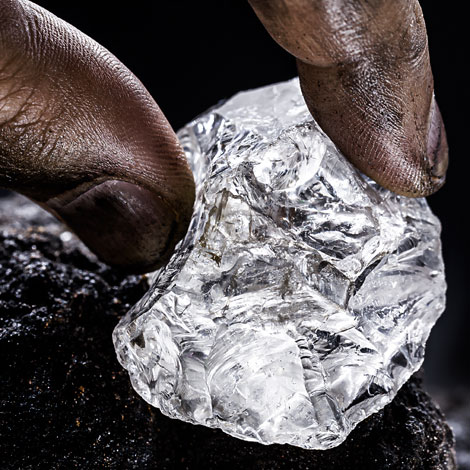
Diamonds are formed at significant depths, typically between 140 and 190 kilometers beneath the Earth's surface. This process occurs in the mantle, the Earth's intermediate layer.
At these depths, the pressure is extremely high, reaching several gigapascals. Additionally, the temperature is elevated, exceeding 1,200 degrees Celsius. These conditions are essential for diamond formation.
The raw material for diamonds is carbon. Under these extreme conditions, existing carbon crystallizes into a cubic structure, giving rise to diamonds.
Over millions of years, diamonds are transported to the Earth's surface through volcanic eruptions. These eruptions carry with them rocks called kimberlites, which contain the diamonds.
During ascent, the kimberlite and diamonds undergo slow cooling, which helps maintain the diamond's crystalline structure.
Once on the surface, diamonds can be found in alluvial deposits, where erosion and other natural processes release them from the surrounding rocks.
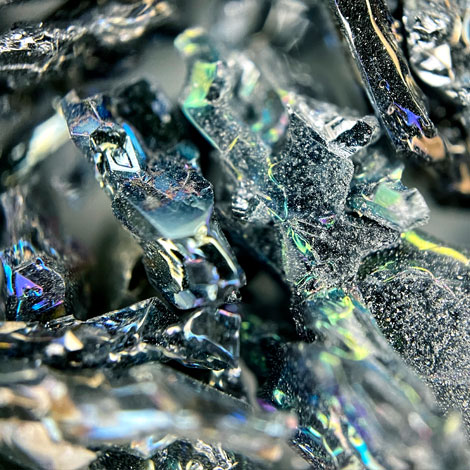
High-quality diamonds are essentially colorless and contain no impurities. However, some diamonds may exhibit colors due to the presence of impurities or defects in their crystalline structure.
The crystalline structure of diamond is responsible for its exceptional hardness. Each carbon-carbon bond is strong and resilient, contributing to the unique strength of this gem.
In summary, diamonds form in the Earth's mantle under extreme conditions of high pressure and temperature, and their chemical composition consists primarily of crystallized carbon. Their journey to the surface through volcanic eruptions and their unique crystalline structure make them one of the most prized and valuable gemstones.
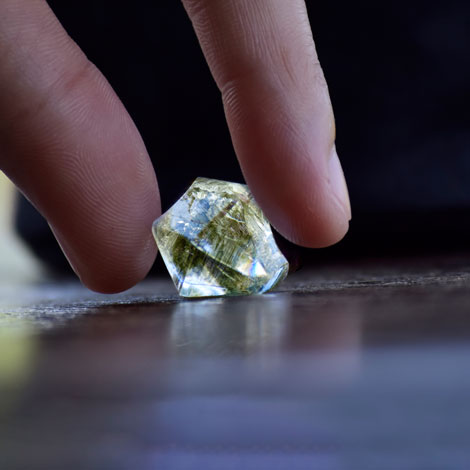
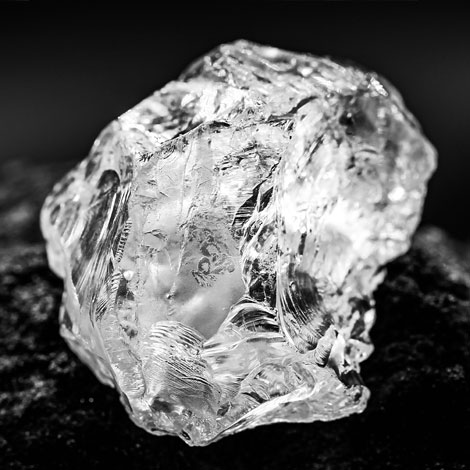
Curiosities and Interesting Facts about Diamonds:
"Diamonds are fascinating and have a rich history! Here are some interesting facts:
1. Spectacular Brilliance:
Diamonds have a unique ability to refract light, creating that spectacular sparkle known as "fire". This is due to their refractive index and their ability to disperse light into its different colors.
2. Unique Formation:
Diamonds form deep within the Earth under extreme conditions of high pressure and temperature. Their composition of crystallized carbon makes them the hardest substance known on Earth.
3. Famous Diamonds
The Hope Diamond, with its blue color, is one of the most famous diamonds. It is believed to bring bad luck to its owners, but its beauty is undeniable. Another celebrated diamond is the Cullinan Diamond, the largest cut diamond in the world, which produced gems now set in the British Crown Jewels.
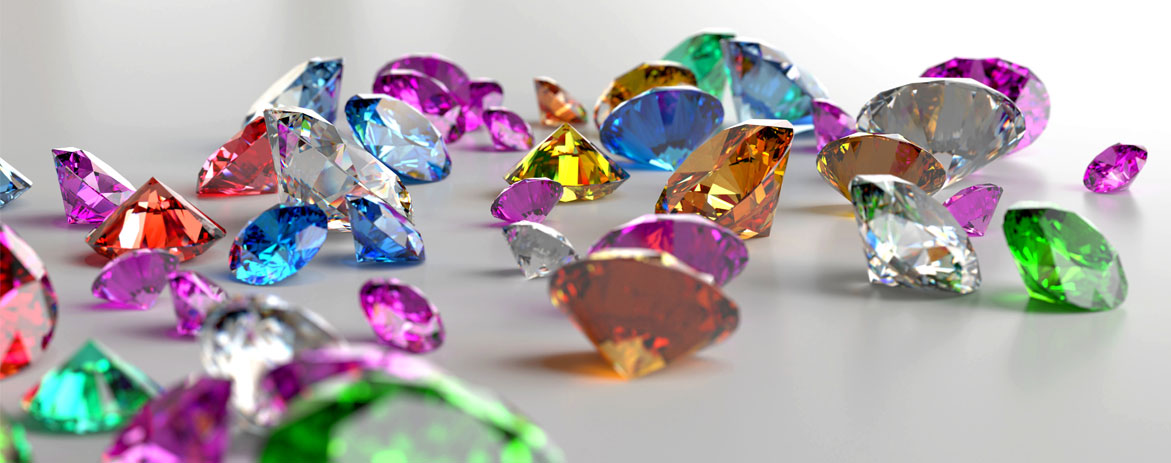
4. Rare Colored Diamonds
Diamonds are not just colorless; they come in a variety of colors. Natural colored diamonds, such as pink, blue, and green, are extremely rare and valuable. The Pink Star Diamond, for example, set a record price per carat for a pink diamond at auction.
5. Unique Inclusions
Inclusions, or small internal imperfections, are unique features in each diamond. Some inclusions, like those forming a particular pattern, are called "fingerprints" and can help identify the diamond's origin.
6. Brilliant Cut
The cut of a diamond is crucial to its brilliance. The most popular shape is the round brilliant cut, which maximizes the amount of light that enters and is reflected within the diamond.
7. Healing Properties (according to some beliefs):
Throughout history, diamonds have been believed to have healing properties. They have been associated with mental clarity, protection from evil and enhancement of spiritual energy.
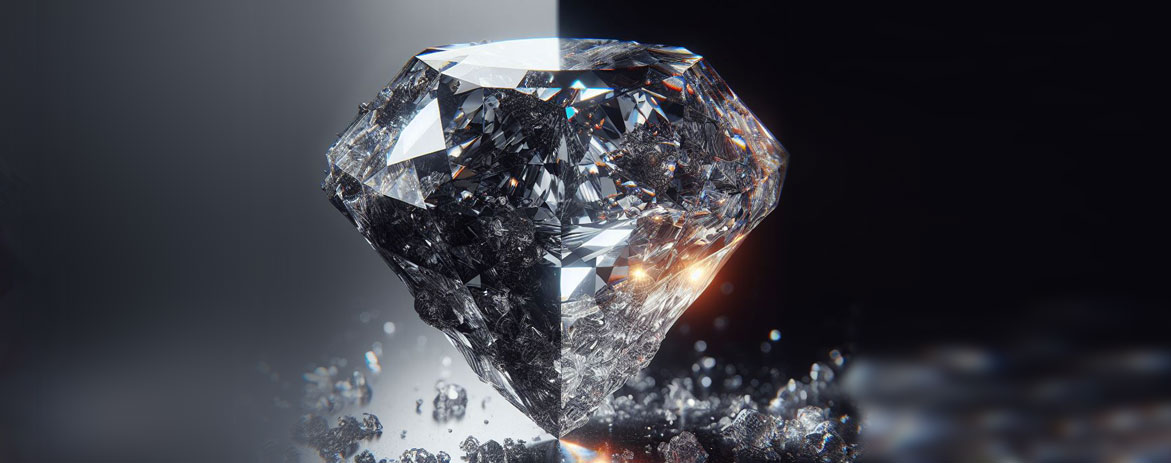
Diamond Characteristics:
These facts highlight the uniqueness of diamonds, not only in terms of their visual beauty but also due to their physical characteristics and the fascinating stories they have accumulated over the centuries.
The 4 C's of Diamonds
1. Cut:
The cut of a diamond is one of the most crucial characteristics that determine its beauty and brilliance. This aspect refers to the quality of the cut, symmetry, and polish of the gem. A good cut not only highlights the diamond's shape but also optimizes its ability to reflect light, maximizing its sparkle and brilliance.
Cut quality relates to the craftsman's ability to shape the diamond proportionally and symmetrically. A well-cut diamond has facets that allow light to refract optimally, enhancing its brilliance.

2. Color:
Diamond Color Scale:
The color scale is an essential component when assessing the quality of a diamond. This classification, ranging from colorless to diamonds with perceptible hues, significantly influences the aesthetics and value of the gem. Here's a breakdown of the diamond color scale:
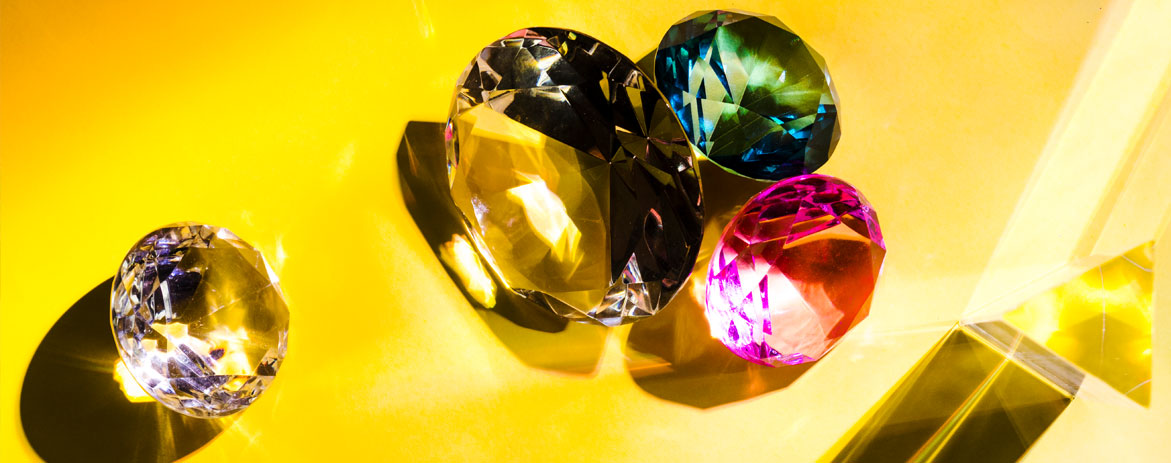
Diamonds in this category also show a virtually total absence of visible color. Although they may contain minimal traces of tone, these are imperceptible to the untrained eye.
Diamonds in this category exhibit minimal color that may be subtly detected only by expert gemologists. However, to the average observer, they appear colorless.
In this classification, the color is slightly perceptible but still not evident to the naked eye. Diamonds in this range offer an excellent balance between quality and price.
Diamonds in this range exhibit increasingly evident color. Shades of yellow or brown are noticeable, and the choice of diamonds in this range may be preferential based on personal preferences and style.
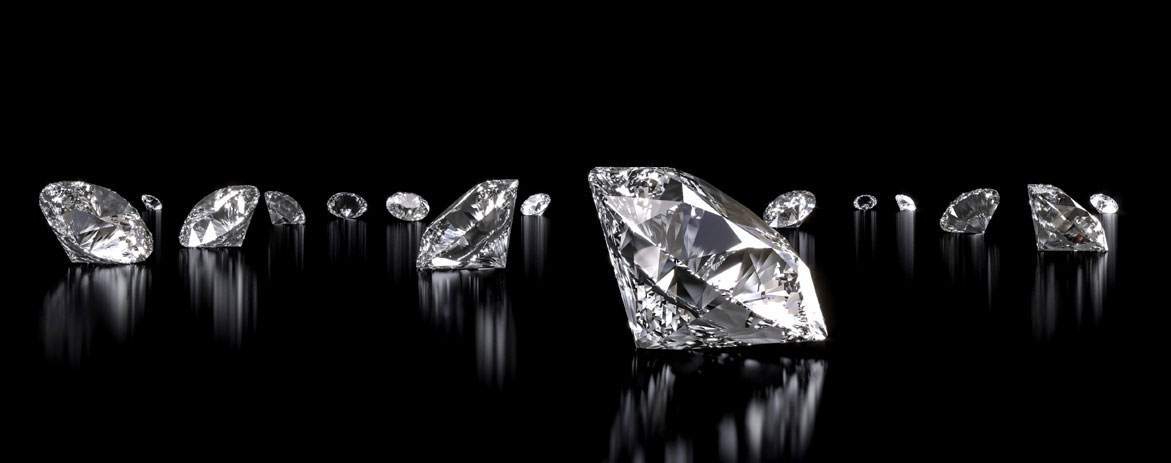
3. Clarity or Purity:
Definition of purity and how inclusions and imperfections are evaluated.
Clarity or purity in diamonds refers to the presence and visibility of internal and external inclusions and imperfections in the gem. These characteristics, also known as "nature," are unique to each diamond and affect its purity and transparency. The evaluation of clarity is essential in determining the quality of a diamond. Here is an explanation of how inclusions are evaluated.
Internal inclusions, also called "clouds," are small imperfections that form during the diamond crystallization process. These inclusions can be crystals, gas bubbles, or trapped minerals, and they are evaluated in terms of quantity, size, position, and visibility. Higher clarity indicates a lower presence of inclusions, contributing to a purer and more valuable diamond.
Clarity Scale:
Clarity or purity in diamonds refers to the presence and visibility of internal and external inclusions and imperfections in the gem. These characteristics, also known as "naturals," are unique to each diamond and affect its purity and transparency. The evaluation of clarity is essential in determining the quality of a diamond. Here is an explanation of how inclusions are evaluated.
The purity or clarity classification uses a standard scale:
- FL (Flawless): Diamond with no inclusions or visible imperfections under a 10x magnification loupe.
- IF (Internally Flawless): Diamond with no visible inclusions under the loupe, but there may be small imperfections on the surface.
- VVS (Very, Very Small Inclusions): Extremely small inclusions, difficult to see even under a magnification loupe.
- VS (Very Small Inclusions): Small inclusions, visible only with a magnification loupe.
- SI (Small Inclusions): Small and easily visible inclusions under magnification.
- I (Inclusions): Inclusions visible to the naked eye, affecting the diamond's transparency.
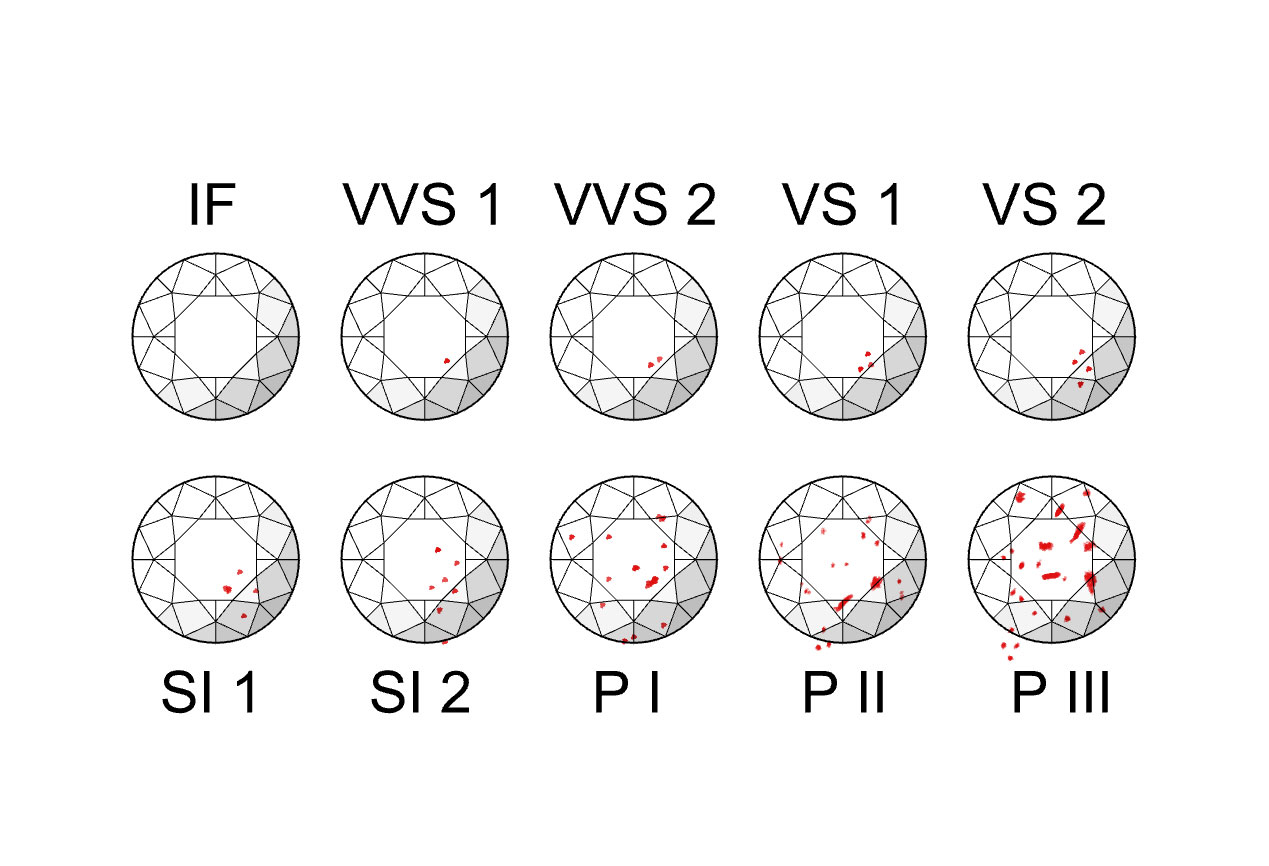
Carats:
The weight measurement of diamonds is expressed in carats, a specific unit of measurement for precious gems. The word "carat" is derived from the ancient use of carob seeds as counterweights in jeweler's scales, due to their consistent weight. Here is an explanation of how diamond weight is measured in carats:
Relationship between Weight and Size:
Although the weight of a diamond is directly related to its size, it does not completely determine the visual appearance. Factors such as cut and weight distribution also influence the perception of size.
Importance in Evaluation:
The carat measurement is one of the "Four C's" - Cut, Clarity, Color, and Carats - used to assess the quality of a diamond. In general, as the carat weight increases, so does the value of the diamond, provided other factors remain constant.
Common Sizes:
Diamonds under one carat are common and accessible, while diamonds over one carat are less common and therefore more valuable.
The most popular sizes include diamonds of 0.50, 0.75, 1.00, and 2.00 carats, but preferences vary according to individual tastes.
Additional Considerations:
The choice of carat weight depends on personal preferences and the buyer's budget. Some people prioritize size, while others may focus on quality and purity.
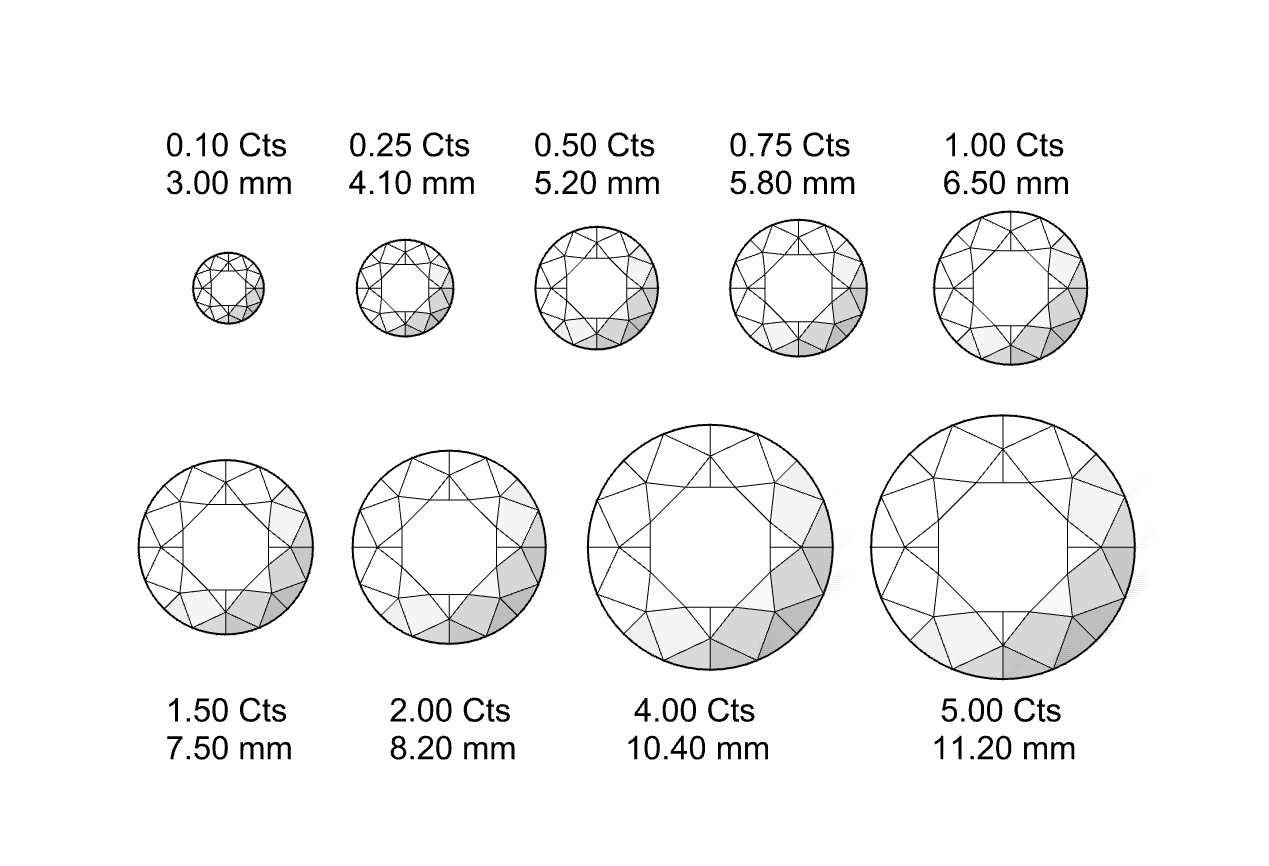
In summary, carat weight measurement is essential when selecting a diamond and plays a crucial role in its evaluation. However, it is important to consider other factors along with weight to choose a diamond that fits individual aesthetic and budget preferences.
